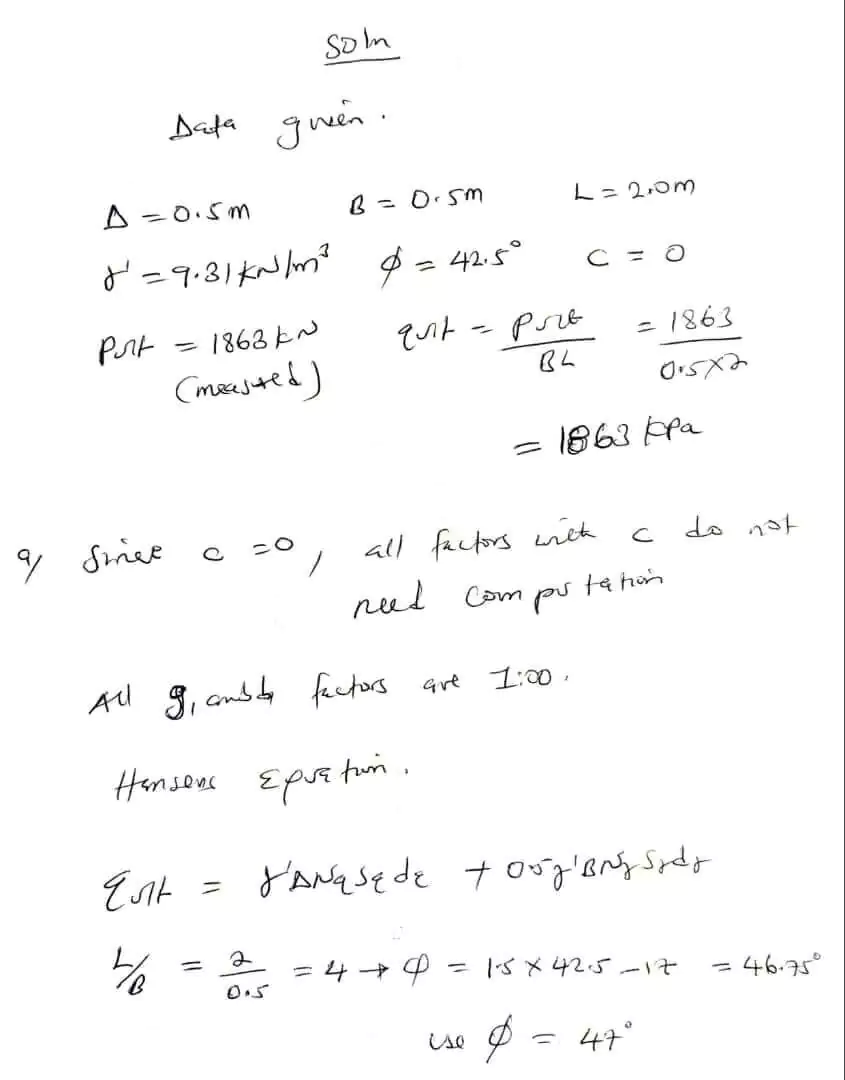Question
A series of large-scale footing bearing-capacity test were performed on soft saturated clay (∅ = 0). one of the tests consisted of a 1.5m square footing at a depth D = 1.5m. At a 25mm. settlement the load was approximately 16.1 tons from intersection of a given load-settlement curve. unconfined compression and shear tests gave values as follows:
∂u =3.0t0n/m2, c = 1.92ton/m2, the unit weight of soil is 17.5KN/m3.
Compute the ultimate bearing capacity by Hansen and compare with the load-test value of 16.1tons.
Solution to A series of large-scale footing…

Immediate settlement
The load causes instant changes in the soil stresses, and reduces soil voids, as soon as the load is applied.
What causes soil settlement?
Geotechnical settlement is typically the result of loading
(from a building or vehicles moving along on a road, for example) exceeding the ground’s bearing capacity.
Due to site ground pressures, pore water pressure increases and then dissipates,
causing consolidation settlement, where the soil beneath the structure moves vertically and horizontally.
Weak and poorly compacted soils are particularly vulnerable.
Soil settlement can be caused by other factors too,
such as changes in soil moisture content, for example, saturated cohesive soils may soften or drier cohesive soils may shrink.
What causes soil settlement?
Geotechnical settlement is typically the result of loading
(from a building or vehicles moving along on a road, for example) exceeding the ground’s bearing capacity.
Due to site ground pressures, pore water pressure increases and then dissipates,
causing consolidation settlement, where the soil beneath the structure moves vertically and horizontally.
Weak and poorly compacted soils are particularly vulnerable.
Soil settlement can be caused by other factors too,
such as changes in soil moisture content, for example, saturated cohesive soils may soften or drier cohesive soils may shrink.
Deep excavations and tunneling, plus the collapse of naturally occurring voids or abandoned mine workings,
are also key factors in causing different types of settlement.
Settlement occurs immediately after a load is applied or take years, depending on the underlying soil conditions
Geotechnical engineers often carry out settlement analysis prior to construction to analyze the ground conditions
and recommend foundation solutions for preventing settlement in the future.




